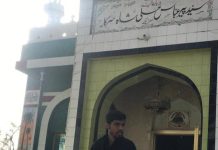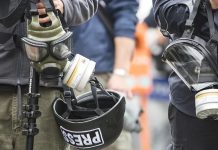Peshawar: Public spending on elementary and secondary education (ESE) in Khyber Pakhtunkhwa province is up. However, parents are increasingly choosing private schools despite only marginally higher performance rates among private school students. Official data shows an eight percent annual increase in private school enrollment over the last 2 years. The results are perturbing. Over half of the students in both private and public schools cannot pass basic mathematics and literacy tests.
Khyber Pakhtunkhwa government announced a hefty increase in its education for upcoming 2017-2018 budget. The Elementary and Secondary Education Department (ESED) received 26 per cent share of the total provincial budget. This means that the ESED got a lion’s share of the provincial education budget, giving them the freedom to exercise new approaches to increase student enrollment and improve quality. Naji Ullah Khattak, consultant and spokesperson ESE, told Truth Tracker that the budgetary increase was initiated following an education emergency put in place by the province.
The public education campaign ‘Ghar Aya Ustad’, launched in 2015, focused on bringing students, who have dropped out of school, back into the classroom and boost the quality of that education. Mr. Idrees Azam, Chief Planning Officer ESE (KP) said in an interview he was hopeful of success since the government. He said that his department “has planned different programmes and initiatives upon demand base from local schools.”
Although many students transitioned from private to public schools during a campaign supported by a programme to improve the quality of education in the northwest led by Adam Smith International, the KP government still struggles to enroll 2.6 million children who are still out of school, according to Pakistan Tehrik-e-Insaf (PTI) chief Imran Khan in 2013. In year 2016 the government conducted a survey to measure progress on bringing children into the classroom but it has yet to be published. Naji Ullah Khattak, consultant and spokesperson ESE (KP) said that ESE expects to launch grade 5 reading and writing test surveys which could present a comparison of quality between private and public schools in the province.
The cost of public versus private education
With nearly a quarter of KP’s budget dedicated to education, the government has never devoted so many resources to primary and secondary education. Yet the spending has failed to deliver all the changes the government promised.
The KP government spends over 22,000 rupees per year per student in the public school system. According to a rough estimate for private schools, monthly fees in the vast majority of schools are below 2,000 rupees, which comes out to about 20,000 per year (just under the government’s annual investment per public school student). Ten to 15 percent of private schools are charging a fee between 2,000 to 4,000 rupees, while only one percent private schools are charging a monthly fee of 10,000 to 15,000 a month for an exclusive education.
Clearly the spending has failed to deliver all the changes the government promised, including equal access to quality education across the region. Despite the ESED initiatives and the financial shot in the arm many parents opt for private education. Salman Naveed Khan, Head Policy and Political Engagement at Alif Ailaan told Truth tracker that until investments aren’t linked to quality seeking accountability will be a challenge.
The quality of public verses private education
Data from the Annual Status of Education Report (ASER) reveals that students in private schools were only outperforming their public school peers by a margin of about 10% when measuring the portion of students who can perform age-appropriate academic tasks. In general, only four out of 10 public school class five students could perform basic tasks in Urdu/Pashto, English and arithmetic compared to five out of 10 private school students. In most subject areas across most age groups, on average only 1 out of 10 students was doing better in private school than in public school.
For example, Only 5 out of 10 students in grade five of private school were able to read Urdu/Pashtu story with compare to 3 out of 10 students in grade five of public school. In both cases, fewer than half of students in both types of schools could perform this basic task.
Another comparison for English learning shows that a private school is slightly better than public school, especially for younger children. The ASER survey reveals that for every 10 students of class five, four from public school and six from private school can read a complete sentence of English.
There are no startling differences between linguistics and arithmetic, with private school students having a slight advantage at all class levels but with over half of students in both types of schools unable to pass.
Elementary and Secondary Education data shows that public school teachers have on average more students in their classroom than their contemporaries in private schools. Public school teachers are responsible for 34 students on average where private school teachers are responsible for just 20. Sahar Saeed, Coordinator ASER Pakistan, stressed the need for active monitoring to achieve quality education.
Parents still choosing private over public in KP
With both government investments in public schools and parents’ investments in private school roughly equal, students in private school have a slightly higher probability of being able to pass grade-appropriate academic tests. Yet for every two new students enrolled in public schools, one student enrolls in private school. The number of public schools shrank from 28,178 in 2014-15 to 27,506 in 2015-16 and while there are 6,743 private schools in year 2015-2016. This is a worrying trend and needs to be addressed.
Naji Ullah iterated that it would be ensured that no school in KP lacks basic facilities by 2018. With election year fast approaching, dealing with education promises could be a challenge for KP government. The government should set its priorities soon.






Great Story